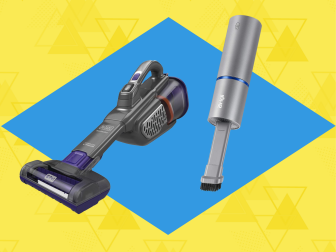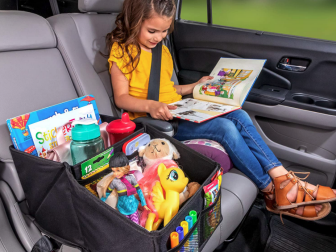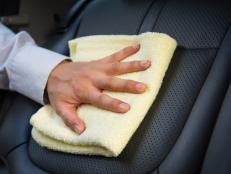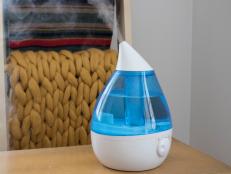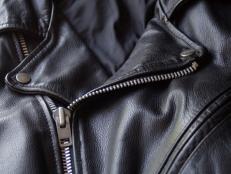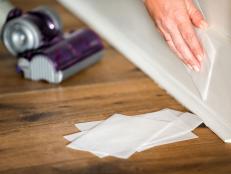How to Clean a Child's Car Seat
Nix the dirt and left-behind crumbs from your kid's in-car snack break. Keep your family's car seats and booster seats clean with these easy routines for spot-cleaning and tackling stains.

Children's car seats are made using a combination of shock-absorbing materials, high-density sponges, foams and fibrous materials. Nylon, polyester and leather are all commonly used when fabricating covers. Together, these materials absorb energy and provide comfort and breathability, but they're also quick to absorb moisture, whether it be from sweat, an unexpected diaper leak or a spilled drink. If it's not moisture, it's the crumbs that make a mess in a car seat. All parents can relate to the astonishing amount of hidden cereal bits wedged into every seam and crevice.

Shutterstock/Sokolova Maryna
Keeping a car seat clean is a challenge, especially as an infant graduates into convertible car seats (also known as 3-in-1 seats) and booster seats. Managing the loose debris and tackling stains is important for the overall cleanliness and to keep mold and mildew at bay. Regular cleaning also helps the materials last longer.
We’ll go through tips for regular light-duty cleanings as well as safe solutions for tackling deep, dirty car seat damage.
A few important things to keep in mind:
- Only spot-clean — never launder — the car seat straps and harness. They’re made of woven threads specially designed for strength during a car accident. Soaking them, cleaning them with heavy-duty chemicals or running them through the washer and dryer can prematurely weaken the fibers.
- Baby shampoo is one of the best cleansers. Make it your first choice over tough chemical cleansers.
- Towel dry as much moisture as you can to help with the drying process. A moisture-absorbent rag can extract a lot of moisture from car seat foam. Paper towels can also help finish the job and make it easier to see when most of the moisture has been eliminated.

Shutterstock/Hrytsiv Oleksandr
Light-Duty Cleaning
Routine vacuuming and spot cleaning can do wonders to keep your car seat looking fresh and new.
The Best Handheld Vacuums, Tested by HGTV Editors
These handheld vacuum cleaners may be small, but they work hard on tough messes.
A small hand-held vacuum with a crevice attachment makes it easy to get in between the seams on a car seat to collect crumbs and dust. You can also use this attachment to collect debris underneath the car seat and around the buckles. If you have an upholstery attachment that you reserve for cleaning your living room sofa, consider using it along the surface of the car seat regularly to agitate and collect the build-up of ordinary dust, hair and dirt.
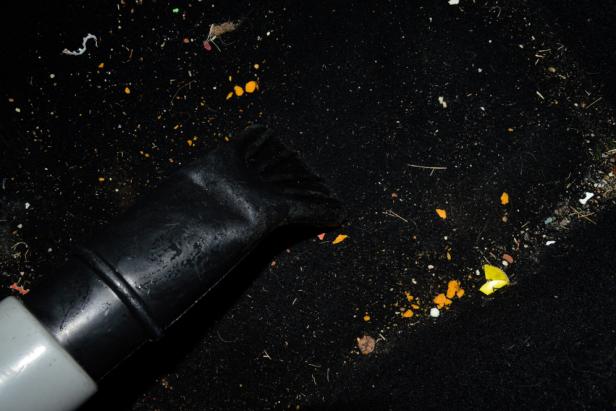
Shutterstock/Jennifer Wallace
Spot cleaning is manageable if you mix a little baby shampoo in a cup with warm water. Use a sponge or cloth to gently blot stains and dirt on the surface of the seat or on the straps and harnesses. Once the spot is soapy, use a dry absorbent cloth to clean the surface and absorb moisture. When you need a more powerful spot cleaning option, use an old toothbrush. It can be more effective at lifting stains caused by dirty shoes or sweaty little legs, necks and arms.
Deep Cleaning
Fabric covers made of nylon and polyester are used on the majority of popular car seats at all price points. While durable and breathable, they’re also porous. If you’ve ever had a child that spilled a bottle or had an accident, you’ve already witnessed just how much liquid a car seat can hold.
Some car seat covers are easily removable, which simplifies the washing and drying routine, but for car seat covers that are fixed or more difficult to remove, cleaning them thoroughly can be a hassle. These tips make it easier to get the job done:
- Remove the car seat for easy access.
- Vacuum the seat first, using crevice attachments to get into as many nooks and crannies as possible. An upholstery attachment can help agitate the fabric surface. While you have the vacuum out, don’t forget to vacuum the area beneath the car seat in your vehicle. It will likely also collect dust, dirt and cracker crumbs.
- Use a mild soap like baby shampoo and apply it all over the car seat, focusing on stains.
- Scrub the seat with a wet cloth or bristle brush. While this is a more thorough and widespread surface cleaning, it’s still important to absorb as much moisture as possible as you go. It speeds the drying time and prevents an unnecessary amount of moisture from absorbing into the foam layers of the construction.
- If the fibrous foam and plastic construction of the car seat need cleaning, a hose or pressure washer can help eliminate crumbs and dust build-up. It’s best to tackle this if you’re able to fully remove the padded seat cover. Allow the plastic and foam to thoroughly dry before reinstalling any slipcover.
- Allow any padding you've removed to completely dry in the sun.
- Reassemble the covers and reinstall the car seat.

Shutterstock/T.Photo
Note: If you have leather car seats or leather detailing on a fabric seat, it’s best if you clean these areas with a 2:1 ratio of white vinegar and water. Wipe the area dry and allow it to fully air dry before reinstalling the car seat.
Cleaning Car Seat Straps and Buckles
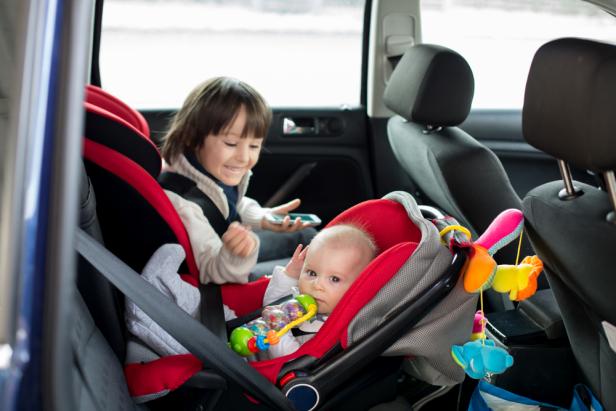
Shutterstock/Tomsickova Tatyana
Harnesses and buckles can easily be removed from the car seat itself but should always be spot cleaned with a gentle cleanser like baby shampoo. Laundering the harness can weaken the tensile strength threads and risk malfunction during a car accident.
Buckles can easily be surface cleaned with a damp cloth.
When you reinstall the straps on your car seat, be sure to follow the manufacturer's instructions to ensure that the positioning and orientation of the buckles meet safety requirements.
These Genius Items Will Keep Your Car Clean on Family Road Trips
A clean car? With kids? Yes, it's possible.






